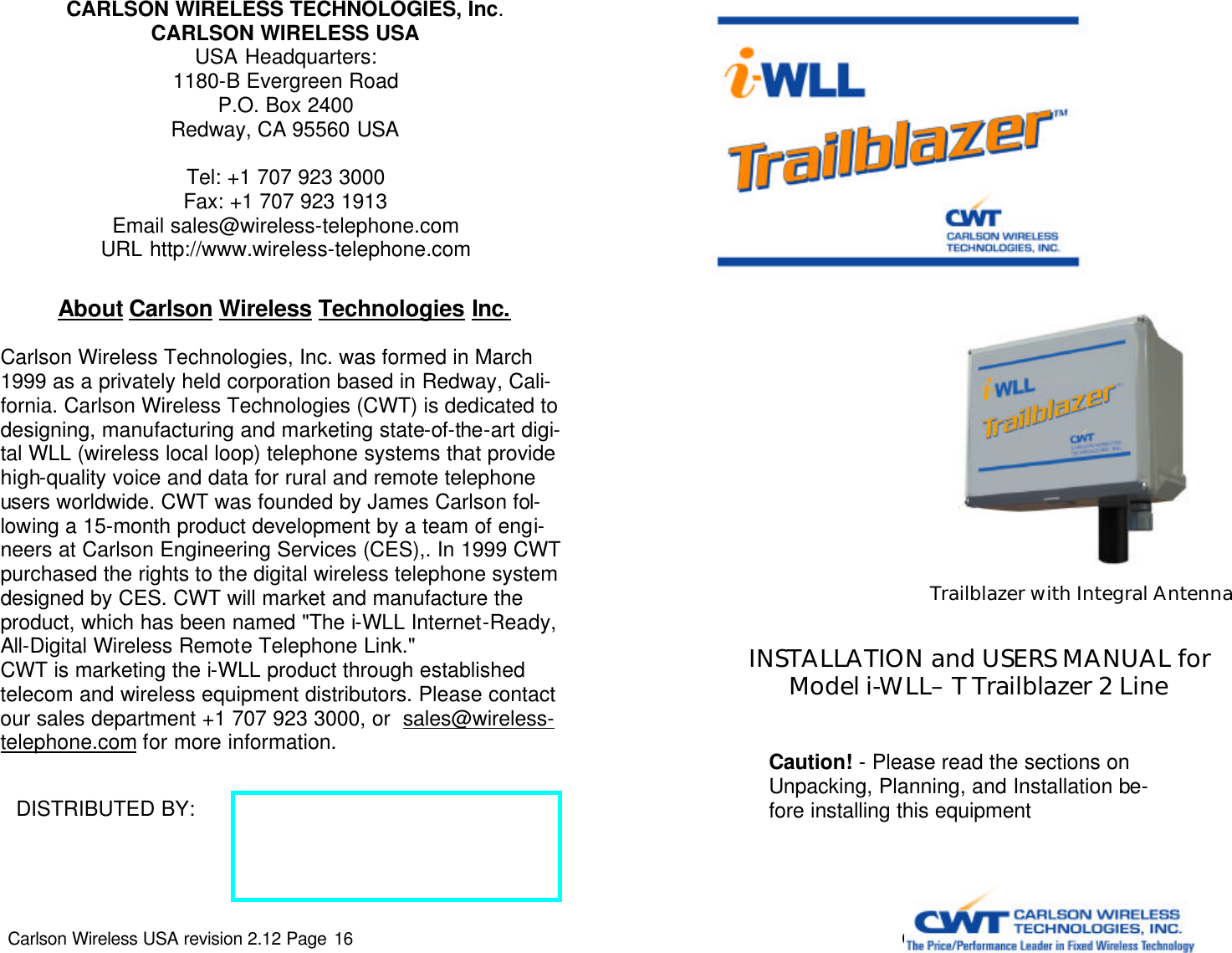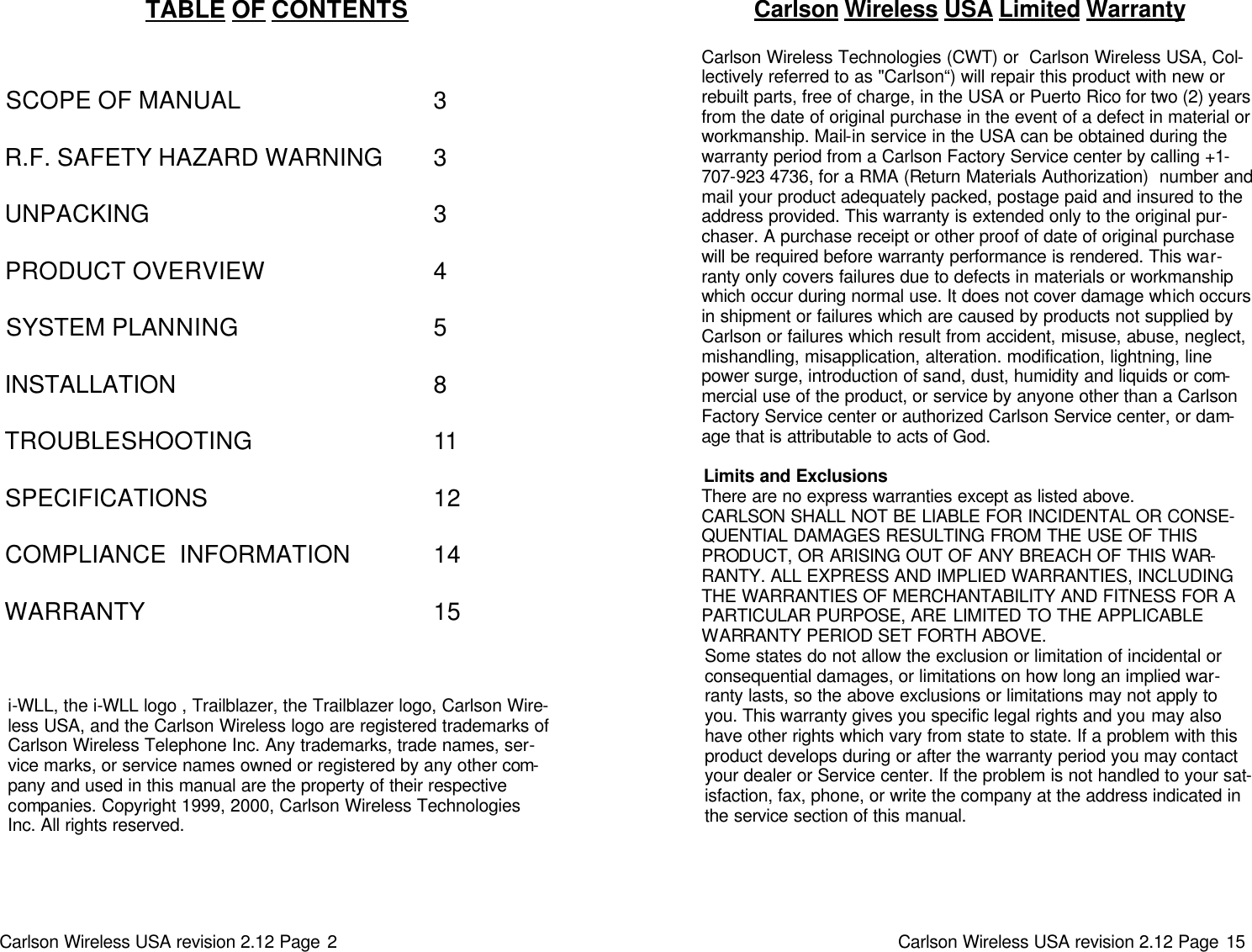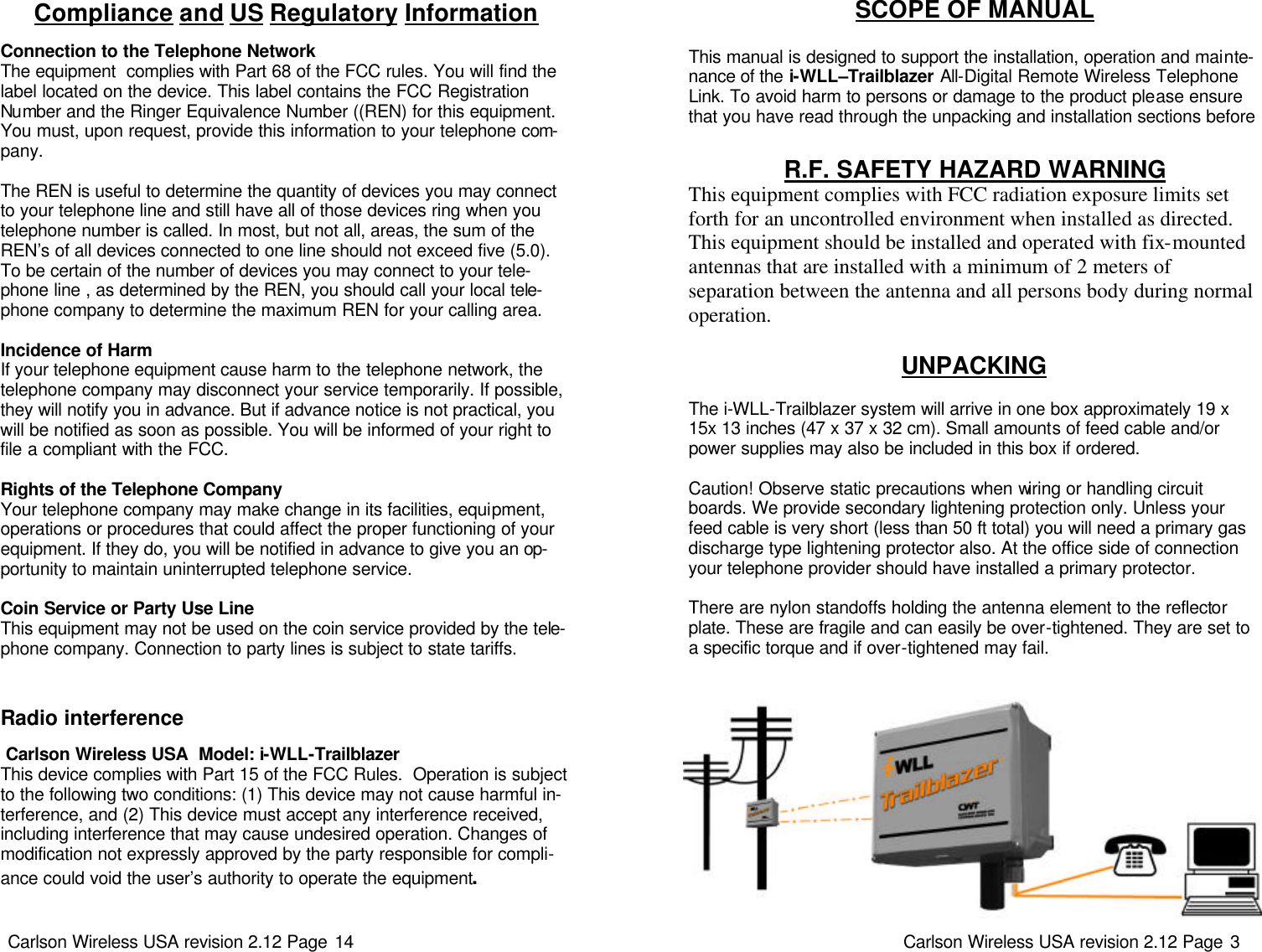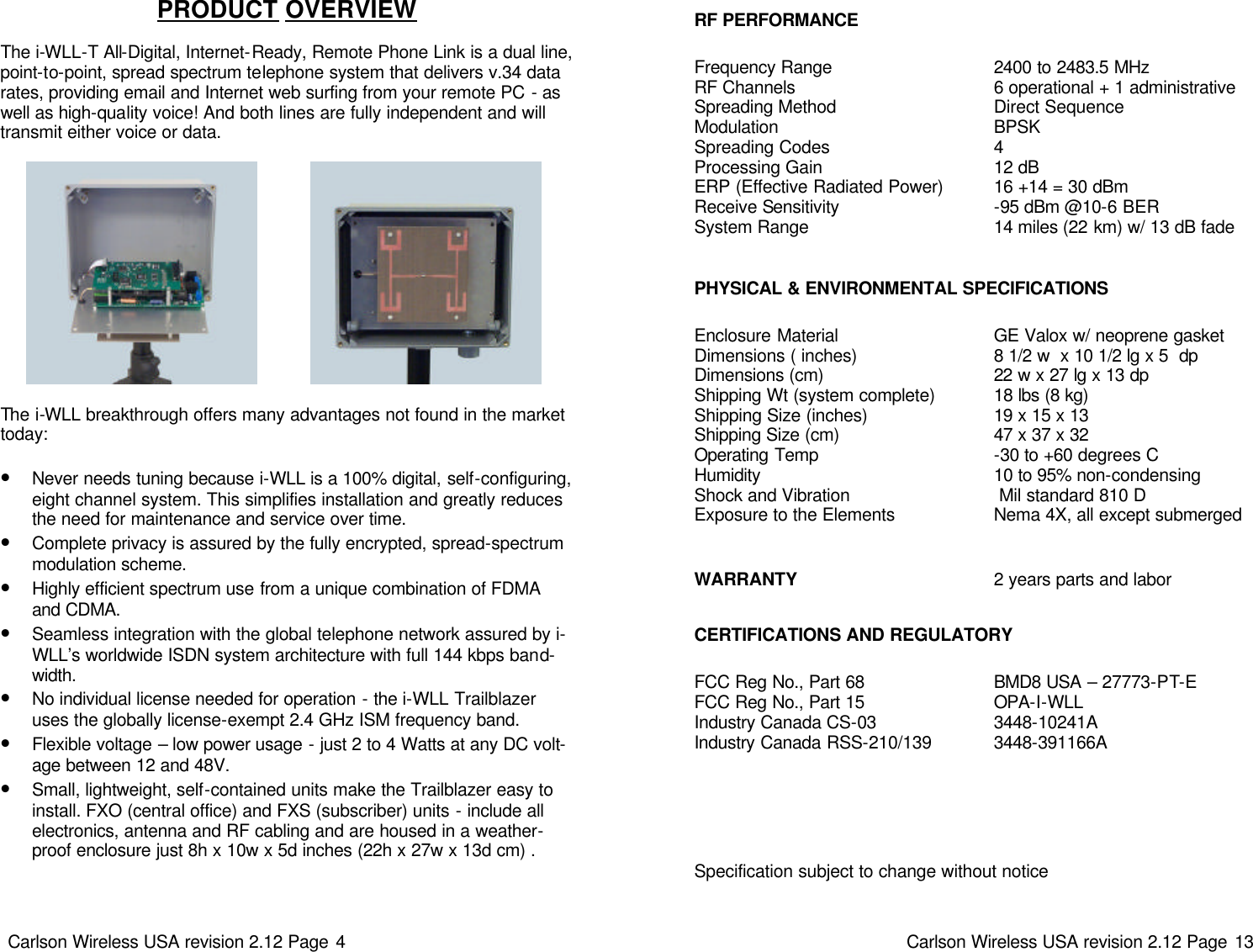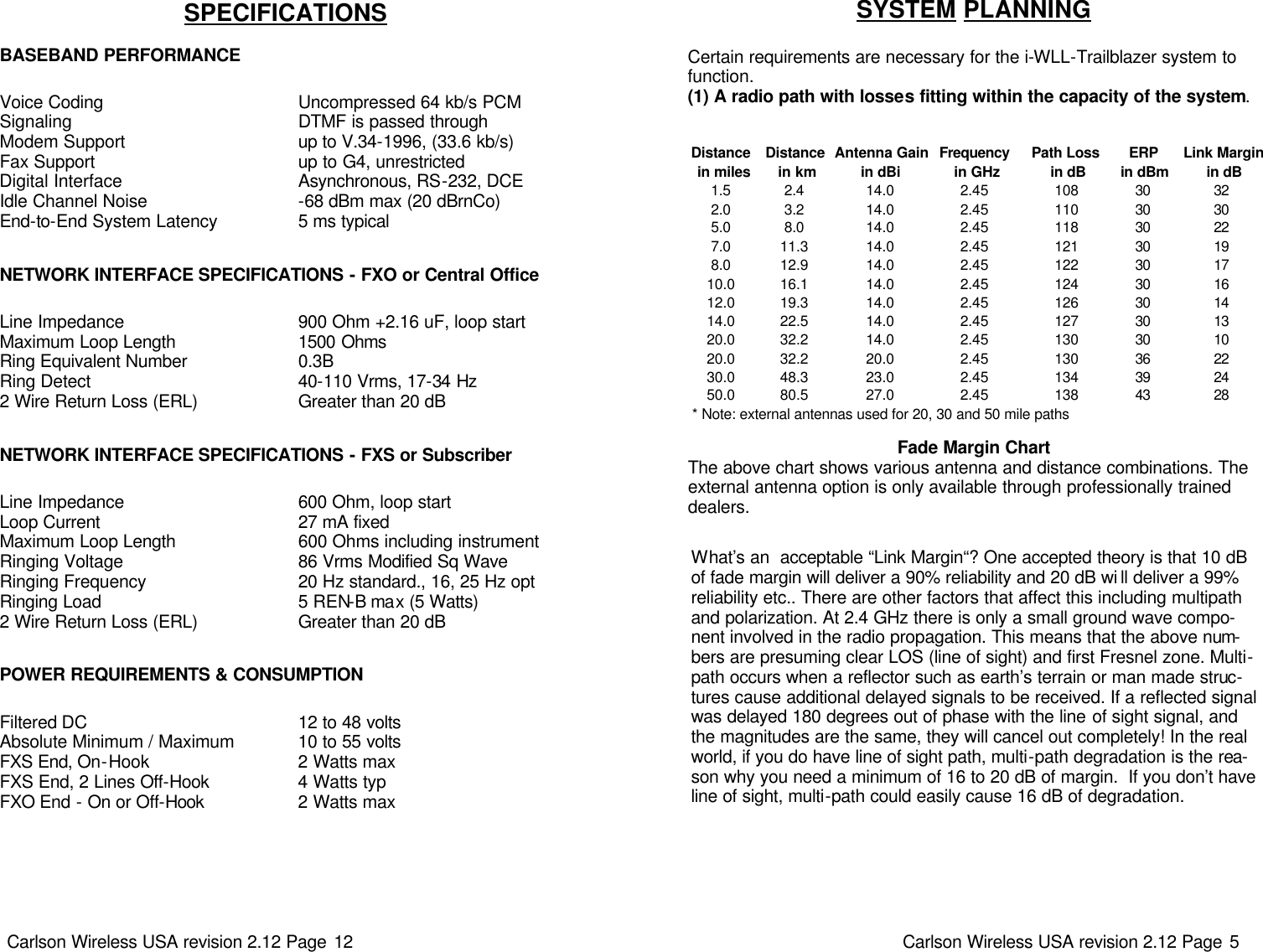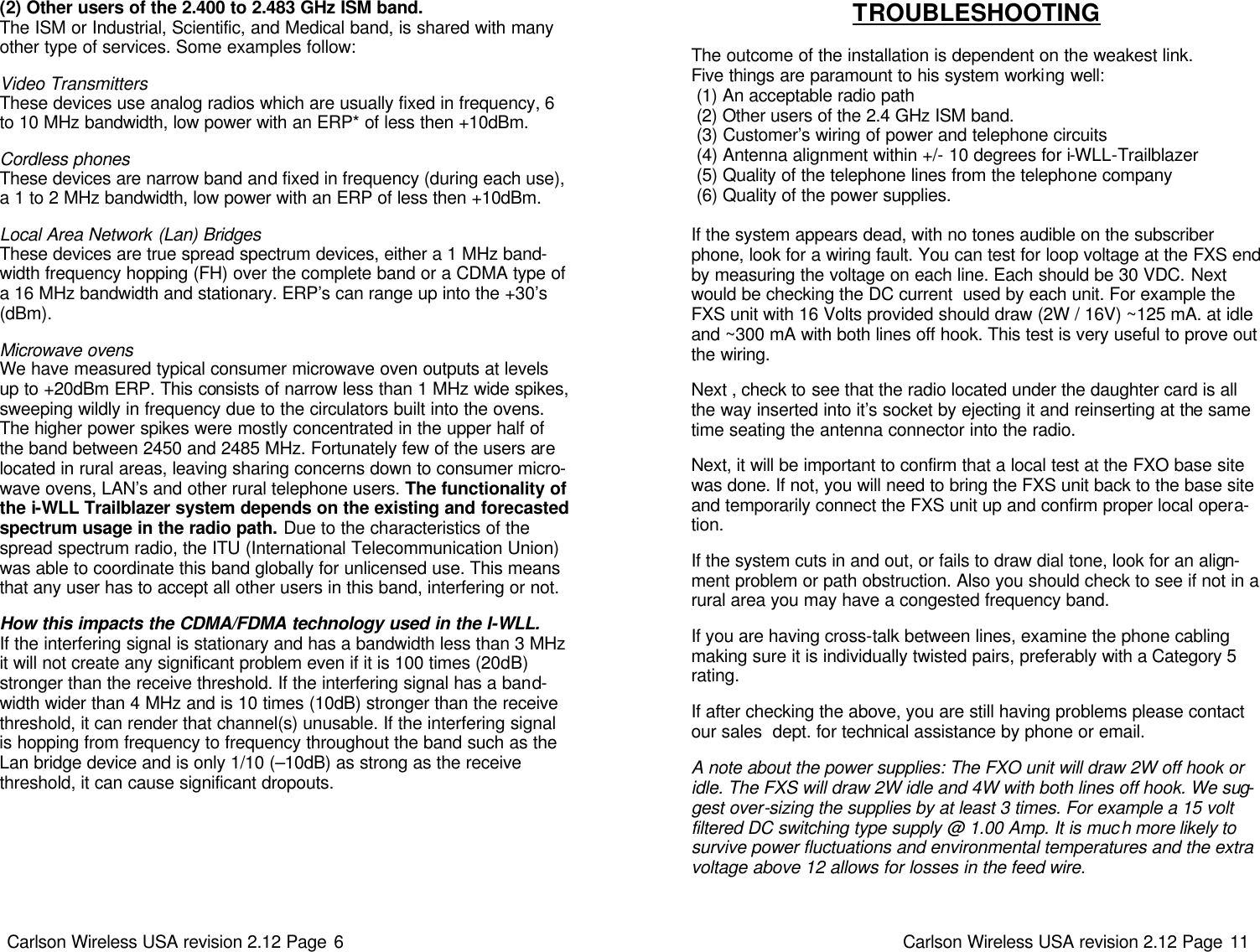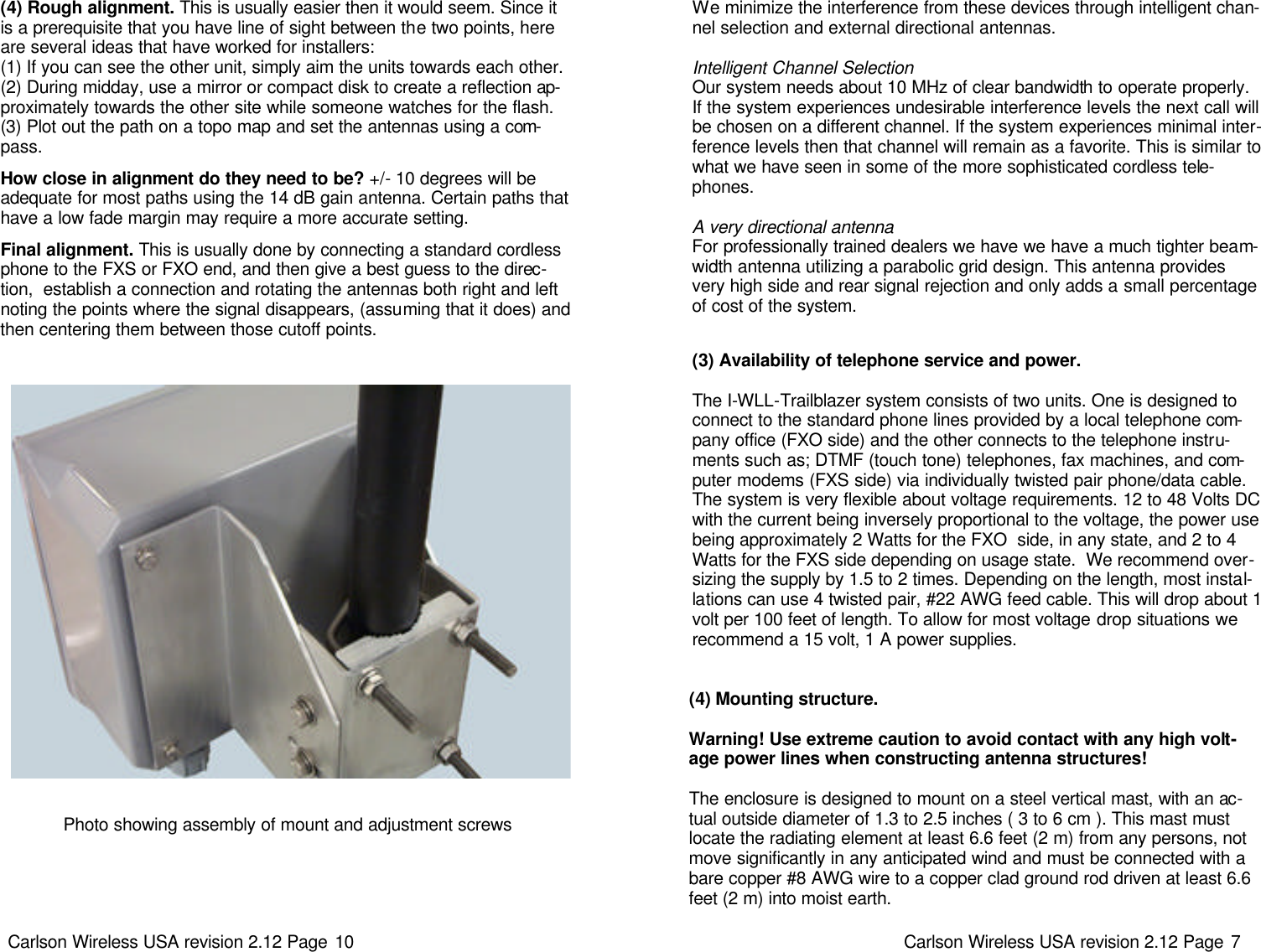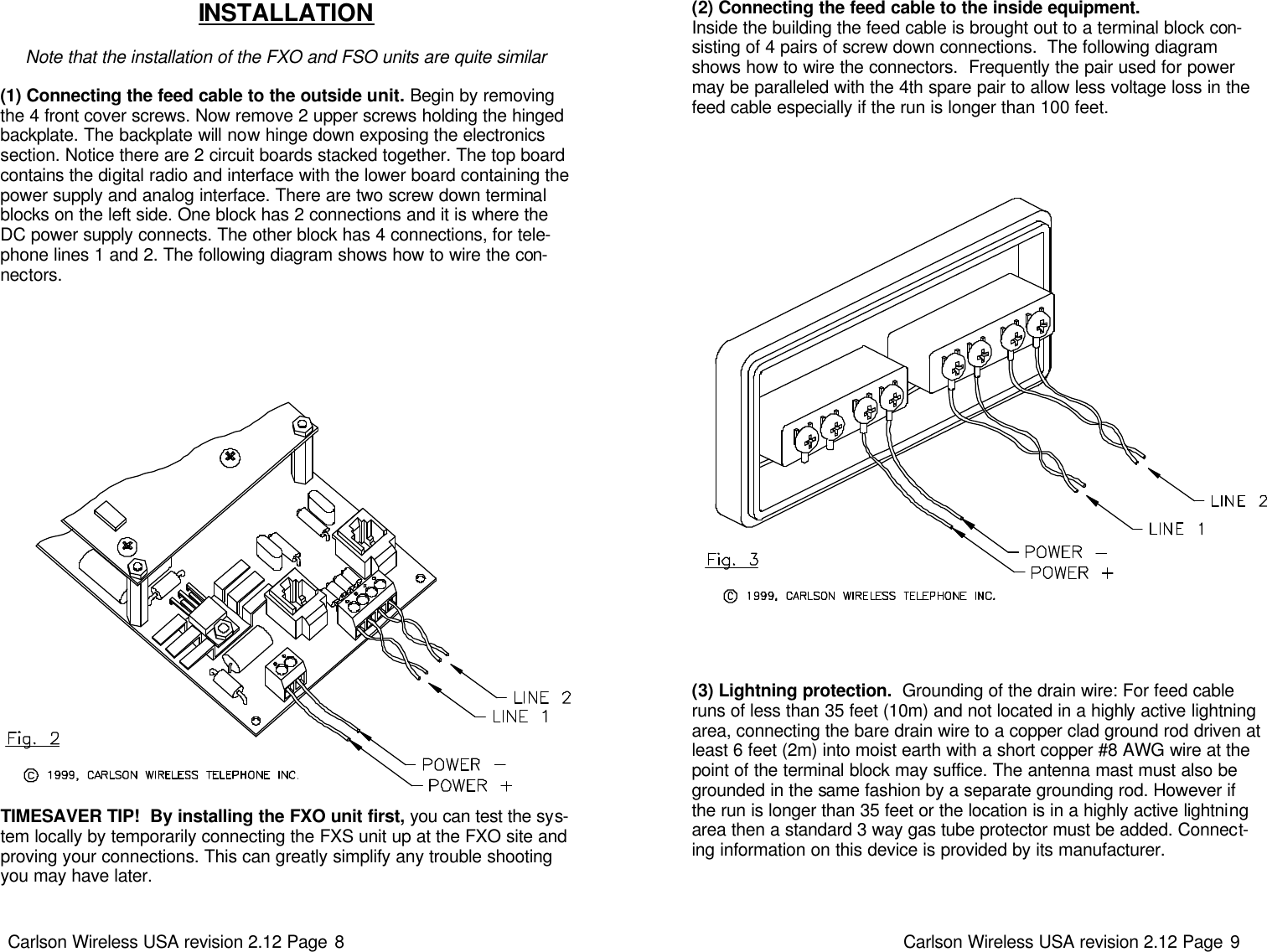Carlson Wireless Technologies I-WLL-T Rooftop Fixed Direct Sequence WLL Transceiver User Manual 2 12 pub
Carlson Wireless Technologies Inc Rooftop Fixed Direct Sequence WLL Transceiver 2 12 pub
Contents
- 1. Professional Manual
- 2. Users Manual
Users Manual
